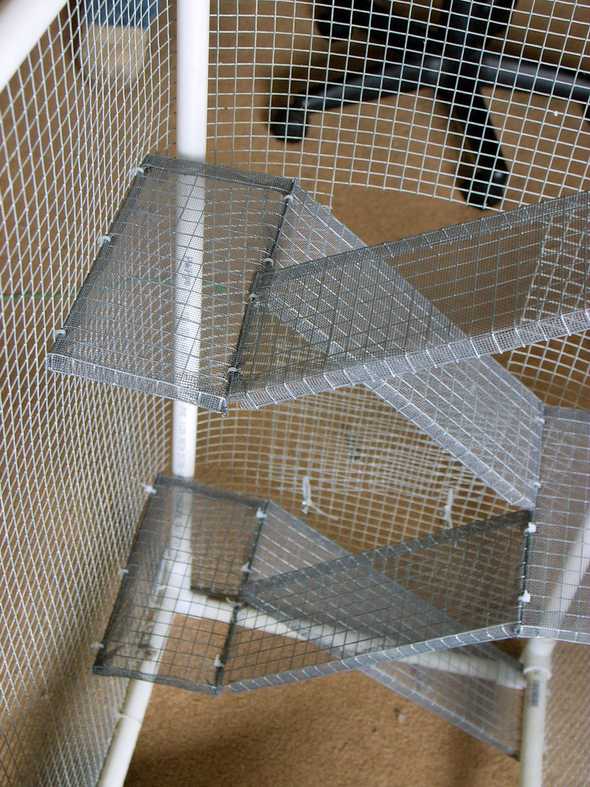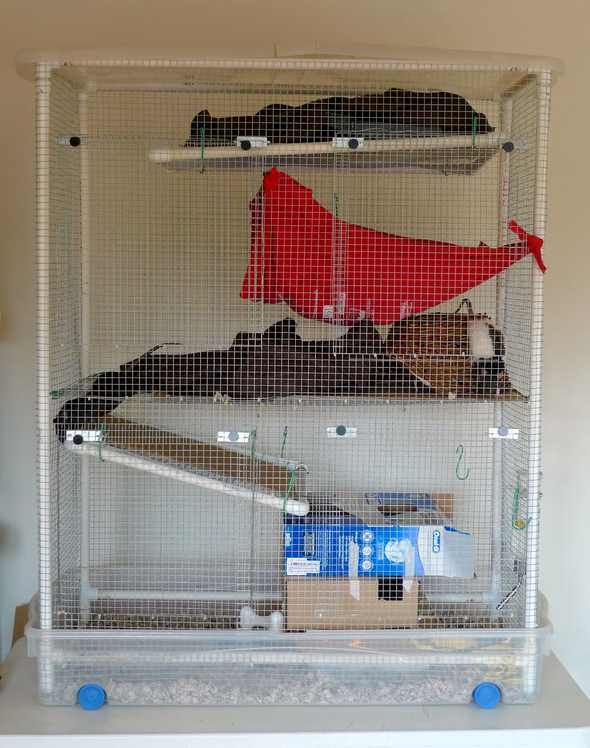Our first rat cage was a small one we picked up at the pet store when we bought our first two rats. As our rats grew, it became obvious that we needed something bigger. Big cages are expensive, so I built my own. Since then I rebuilt the cage once from scratch. This page describes my improved design.
Supplies
- Sizable plastic box, with lid, to build the cage in. You’ll want to find one that isn’t very high, but preferably wide and deep.
- Roll of 1/2 inch hardware cloth. You can save yourself a lot of work by getting a roll that is as wide as you want the cage to be tall. Common widths are 3, 4, and 5 feet.
- 1/2 inch (schedule 40) PVC. I think the 1/2 inch refers to the inside diameter of the pipe, but mine seems a little bigger than that. It’s the common stuff at the hardware store, sold in 10 foot pieces.
- 8 PVC corners (“side outlet 90s”)
- 4 PVC elbows for each shelf
- Bag of 100 6 inch cable ties.
- Length of 1/8 inch thick 3/4 inch wide zinc plated steel. Exact dimensions aren’t that important, as long as you can attach it to the hardware cloth, and as long as magnets will stick to it. You’ll need 4 inches of length for every door.
- 4 strong magnetic discs per door, 3/4 inch in diameter and 1/8 inch thick, preferably coated with something. I bought these. You can buy two magnets that are twice as thick instead, but I couldn’t find any coated ones in that size.
- If you’re hanging your shelves with method 1: 2 key chain rings, 2 threaded rods a little longer than the depth of your cage, and 4 nuts that fit the rod per shelf.
- If you’re hanging your shelves with method 2: Some 12 gauge solid core copper wire (coated).
Cage
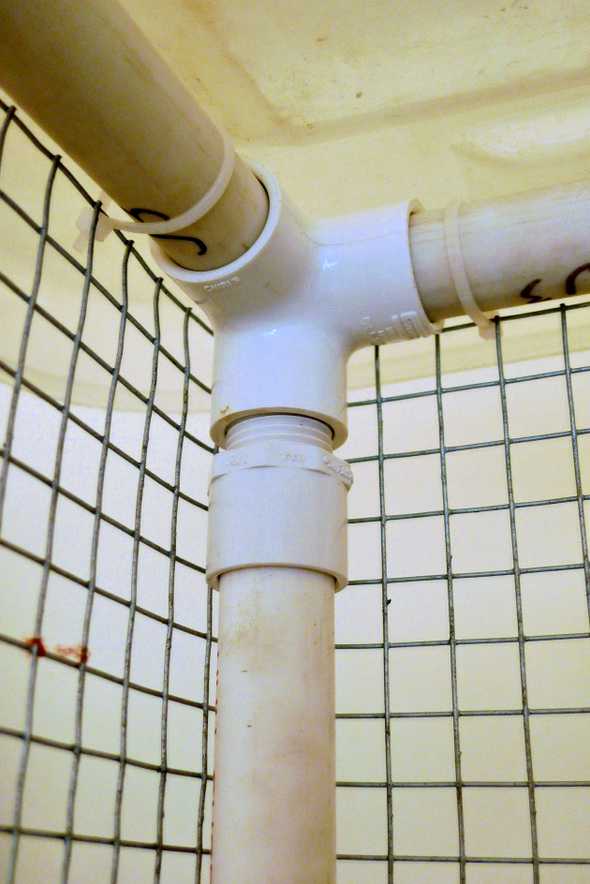
After cutting the hardware cloth, you’ll be left with sharp points at the end of each wire. You can deal with them in 2 ways. The first is to fold each wire that sticks out back onto itself. The second is to just cut them as short as possible and use a metal file or sand paper to soften the point a bit. The former method works better, but is a lot more work.
Use cable ties to connect the hardware cloth to one vertical side of the PVC frame. Wrap the hardware cloth around the frame, securing it with cable ties as you go. Stretch the hardware cloth as taut as you can. I used cable ties every 5 inches or so. Cut off any hardware cloth you have left over once you wrapped all the way around the frame. Put the frame in the storage box, and put the lid on top. Admire your work.
Doors
You’ll want to cover almost the entire front of the cage with doors. If you don’t have enough doors, it can be a real pain to access certain parts of the cage without taking the whole thing apart. Unless your cage is really narrow, you should have at least 2 doors side by side so that you’ll have a stable piece of cage to attach shelves to. In our current cage we have 2 doors on the bottom, and 2 doors on the top. Each door opening is just over 12 inches by 12 inches. I wouldn’t make doors much bigger than that because they might be too flimsy. Don’t make them too small because it’s really handy to be able to get an arm in all the way. Before you start cutting anything, remember that the door itself is going to be bigger than the door. The door take up two squares to the left, top, and right of the door.
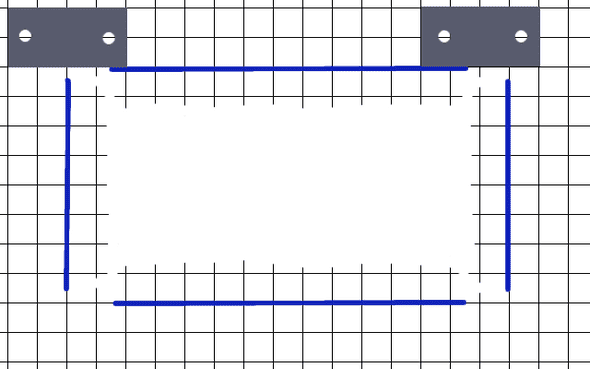
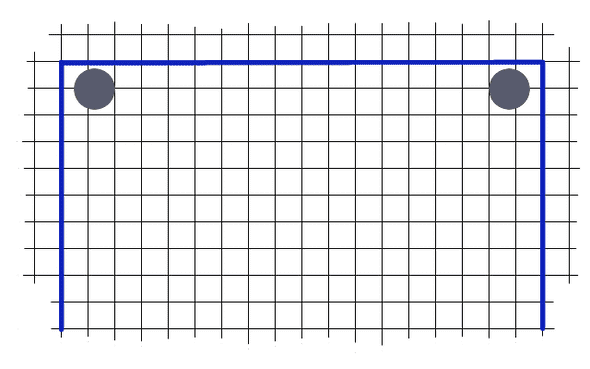
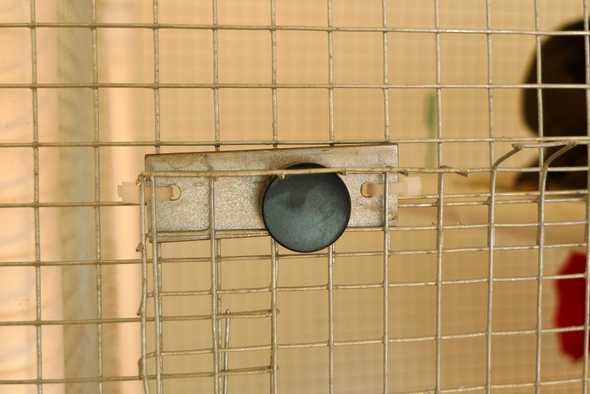
Next time I make a door I will probably add a little flap in each corner to hold the magnets down. They do occasionally come off when we open a door too quickly.
Shelves
The shelves are pretty straightforward. Make a rectangular frame out of PVC and and PVC elbows, taking care that the width is the same as the depth of your cage so the shelf will fit in the cage snugly. Then cut a rectangle of hardware cloth of the same size, and attach it tightly to the frame. Now you have a choice of 2 different methods to attach the shelf to the cage. We put cardboard in our shelves, which we replace every few weeks or as the rats tear it up. Number 1 uses threaded rods. Attach 2 key chain rings to the bottom of each shelf, so that their opening faces the front of the cage. Now take a threaded rod. Put a bolt on one side, stick it through the back of the cage, through a key chain ring, and through the front. Then put a bolt on the front. Do the same for the other key chain ring. This firmly attaches the shelf to the cage, but it’s a bit of pain to move the shelves around.
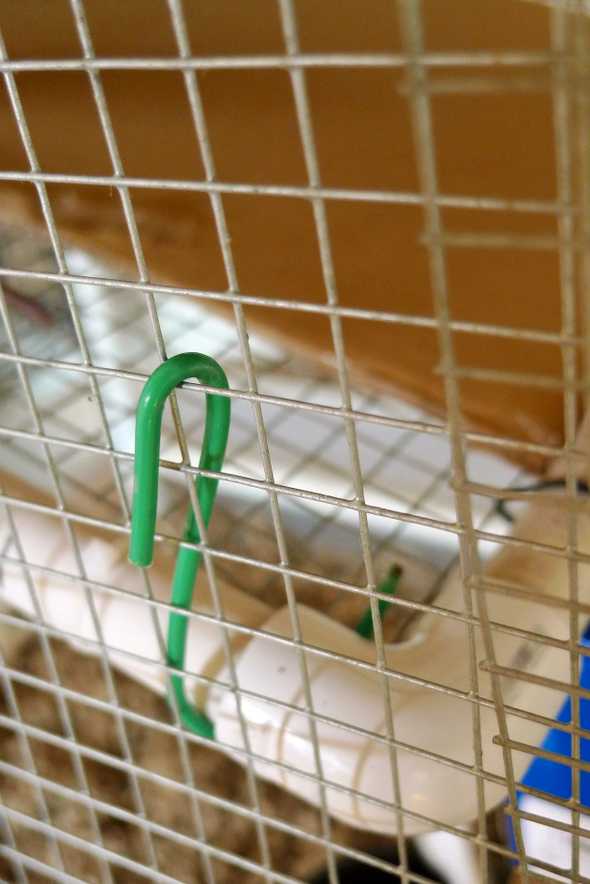
In our cage we also have one permanent level in the middle. It just consists of a piece of hardware cloth that divides the top of the cage from the bottom. There’s a hole on one side to let the rats get through. This also allows us to turn the cage into two parts, in case one of the rats is sick, simply by blocking up the hole.
Ramps
I don’t have ramps quite figured out. I have some ideas in my head, but haven’t tried it yet. In the old rat cage I had a staircase, which worked very well except that it was a lot of work to take out to clean. If you build this, keep it in mind when you put in the doors of your cage, because this design has to be fastened to the side of the cage permanently. To build one of those you’ll need more hardware cloth and cable ties, as well as some fine mesh plastic hardware cloth (which is used in screen doors etc). The staircase consists of landings and ramps.
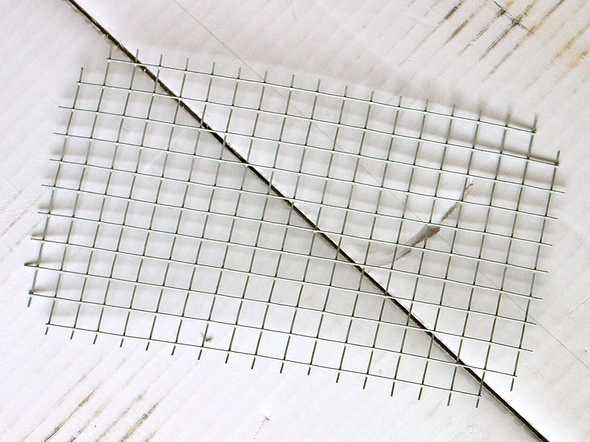
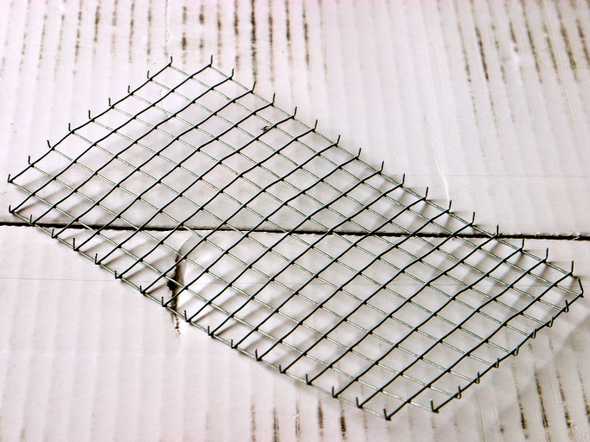
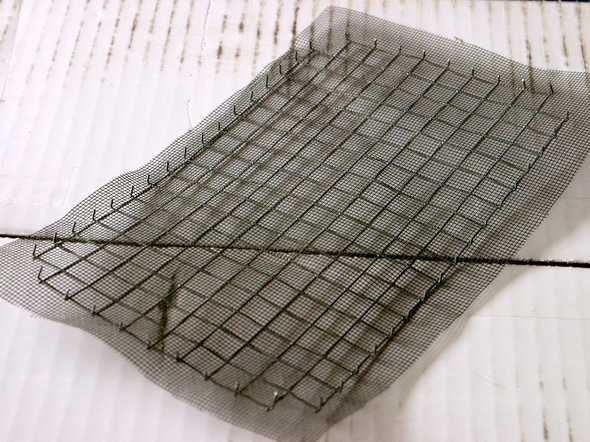
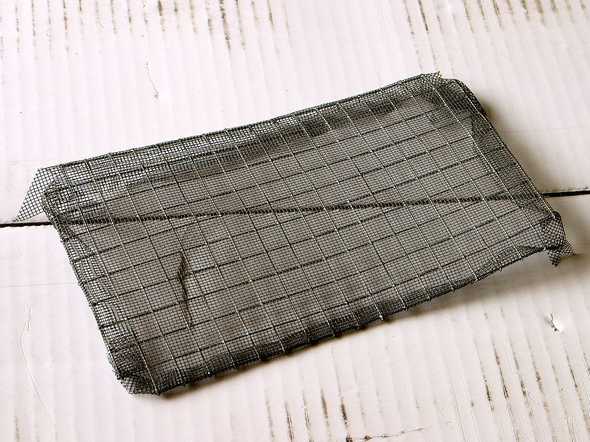
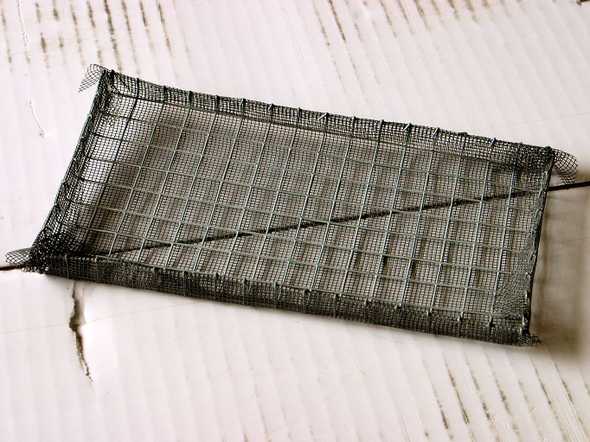
To make ramps for in between the landings, just build a landing of a different size and change the very last step. Instead of bending all the way around the ramp, just bend the long sides. This results in a shallow trough instead of a basket. If you bend in the ends as well, then they will be in the way when attaching the ramps to the shelves.
